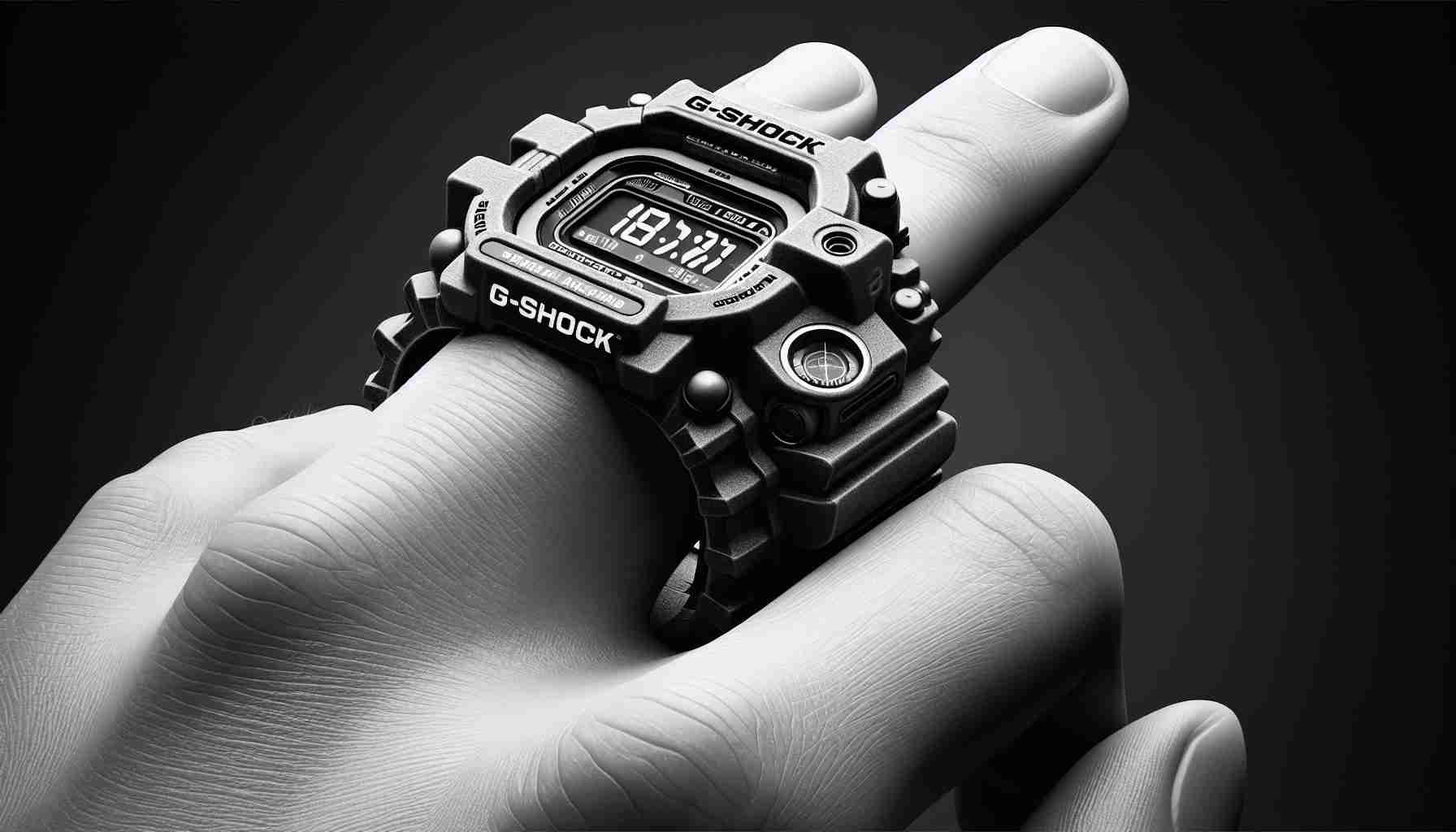Casio Unveils the Tiny Yet Mighty Ring Watch
If you’ve ever dreamed of wearing a G-SHOCK watch on your finger, Casio’s latest invention is about to make that dream a reality. As Casio celebrates half a century in the watch industry, they have introduced a unique piece—the CRW-001-1JR ring watch, a tribute to their innovation over the past 50 years.
To mark this milestone, the CRW-001-1JR takes inspiration from the original GMW-B5000D-1, boasting a design reminiscent of the iconic Full Metal G-SHOCK from 1983. Weighing in at a lightweight 16 grams (0.5 ounces), this stainless steel ring watch is a tenth the size of a typical wristwatch, measuring 25.2mm by 19.5mm, with a thickness of 6.2mm.
Designed primarily for a size 10.5 finger, the ring is slightly adjustable for smaller sizes by removing spacers. It offers splash resistance suitable for everyday use, deviating from the typical water resistance G-SHOCK fans are accustomed to.
The ring is equipped with multiple features, including digital time display, day and date functions, dual time zones, a stopwatch, and an LED flash alert. Powered by a quartz movement, the battery lasts approximately two years before needing replacement at a Casio service center.
While the ring is a limited edition with unspecified production numbers, it’s set to launch exclusively in Japan this December, priced at ¥19,800 (around $129). Keep an eye out for any potential global release announcements!
“The Future of Wearable Tech: Rings That Tell Time and More”
The Fascinating Rise of Wearable Technology in Unexpected Forms
In recent years, technological advancements have seen the fusion of fashion and functionality, creating wearables that push the boundaries of traditional design. Casio’s newly unveiled ring watch, the CRW-001-1JR, exemplifies this trend by shrinking watch technology to fit on a finger. But what does this mean for the future of wearable tech, and how can it impact the development of new technologies and human lifestyles?
Interesting Facts and Controversies
The CRW-001-1JR isn’t just about size. It’s harnessing the legacy of Casio’s renowned G-SHOCK series but in a completely novel format. This innovation sparks a broader conversation about the potential for miniaturization in technology—how small can we go while retaining full functionality? It’s stirring debates: are we valuing form over function, or are we paving the way for more discreet, easily adaptable tech?
Critical voices raise concerns about the practicality of such devices. Will the limited battery life and the requirement to visit a service center for replacements limit consumer appeal? What about the comparatively minimal water resistance—a staple feature of the G-SHOCK brand? These questions lie at the heart of an ongoing discussion on balancing flexible design with the robust utility historically associated with technological advancements.
Advantages of Miniaturized Wearable Tech
1. Enhanced Portability and Convenience: Wearable tech in forms like the ring watch offers unparalleled portability, making it easier for users to carry and access valuable information without traditional bulk.
2. Aesthetic Appeal: Integrating technology into fashionable forms opens new doors for consumer expression, blending personal style with practical function.
3. Future Applications: The technology behind such miniaturization could revolutionize other areas—imagine biometric sensors, health monitors, or communication devices that you wear as effortlessly as a ring.
Disadvantages and Challenges
1. Technical Limitations: Miniaturizing technology can lead to compromises on features like durability, battery life, and comprehensive functionality.
2. Maintenance and Usability Issues: Requiring specialized centers for battery replacements could be inconvenient for global consumers.
3. Market Accessibility: With such innovations initially limited to specific regions (such as this release exclusive to Japan), potential international interest may remain unmet.
How Could This Technology Evolve Further?
Could we see a global expansion and acceptance of finger-worn smart devices? Will future iterations include more advanced features, such as internet connectivity or health tracking capabilities? Companies must overcome current technical limitations to fully realize this technology’s potential.
Related Future Insights and Developments
For insights into future developments in wearable technology, keep an eye on advances from industry leaders. Check out leading tech news and updates at CNET, The Verge, or explore broad tech evolution at WIRED.
As wearable technology continues to shrink, the line between accessories and devices blurs further, leading us into a world where technology seamlessly adapts to our bodies and lifestyles. With each step in this direction, it’s clear that the future possibilities are endless and exciting.





















